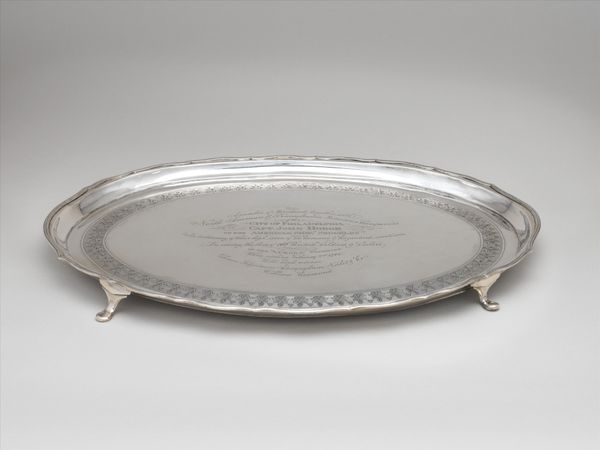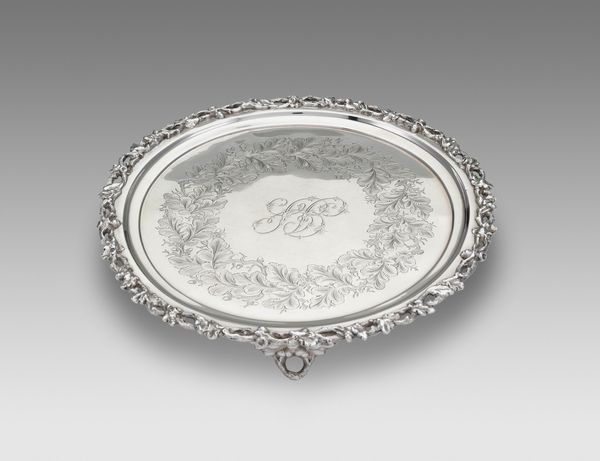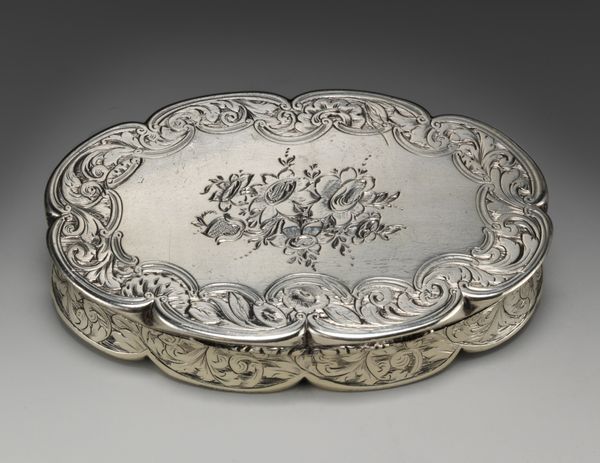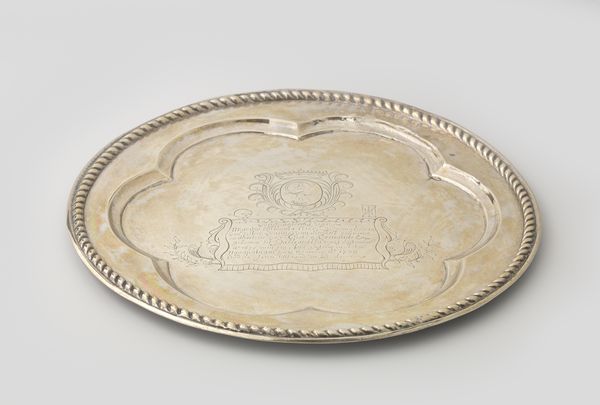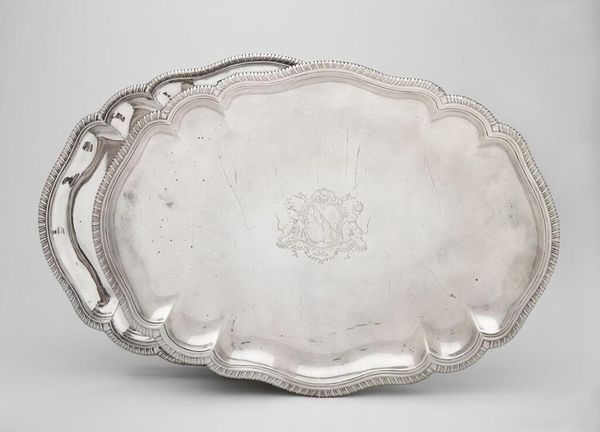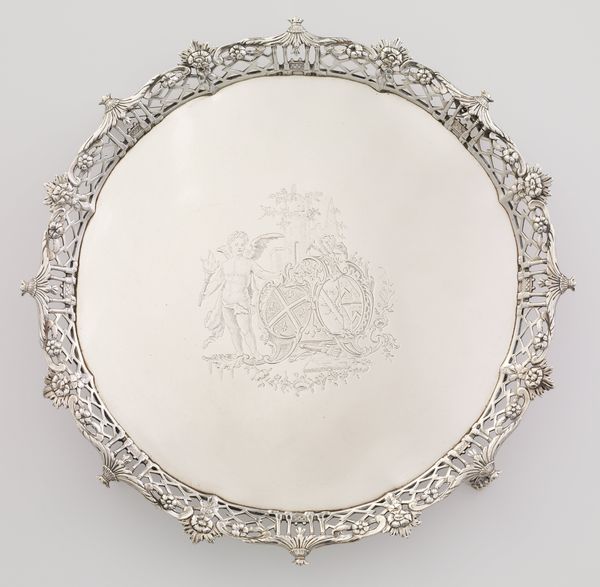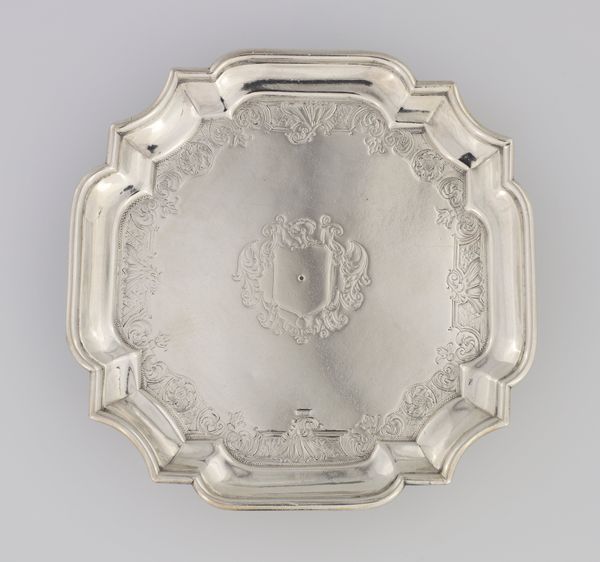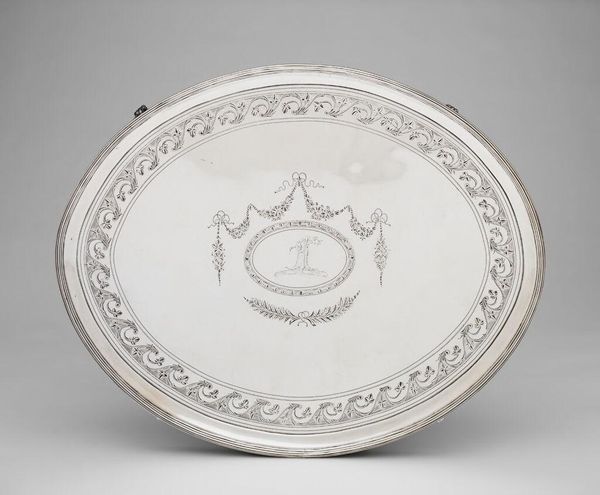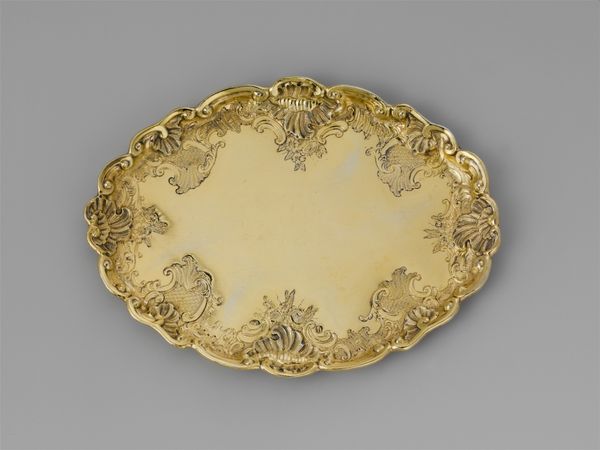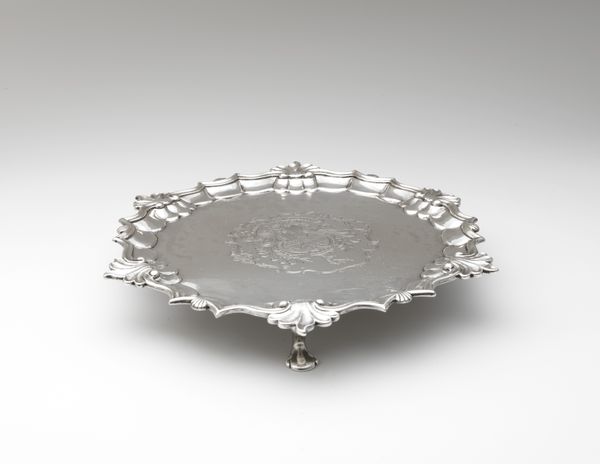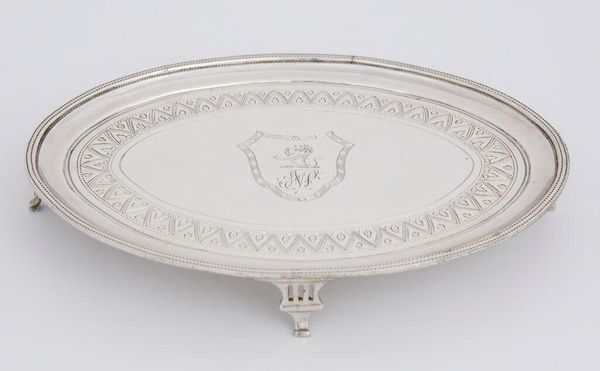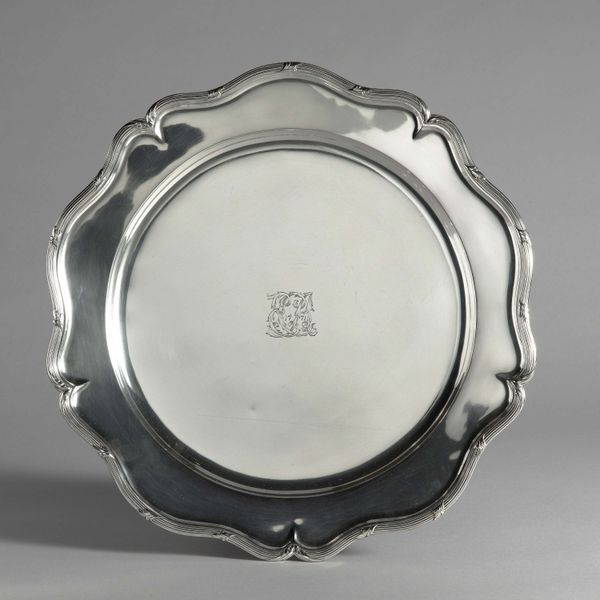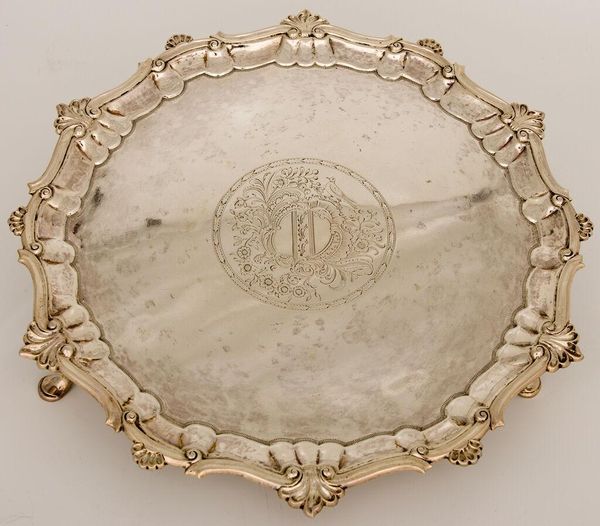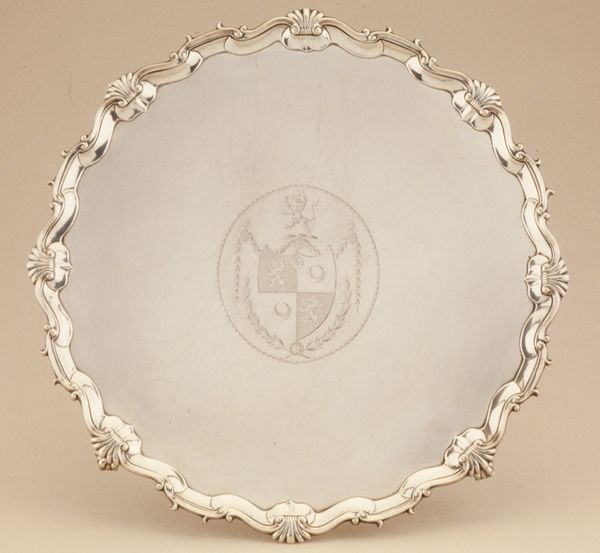
Schenkpiring ter nagedachtenis van Gustaaf Willem en Magdalena Ursula Stein van Gollenesse. 1739
0:00
0:00
silver, metal
#
silver
#
baroque
#
metal
#
decorative-art
Dimensions: diameter 39.5 cm, height 2.1 cm
Copyright: Rijks Museum: Open Domain
Editor: Here we have a beautifully crafted silver plate from 1739, made by an anonymous artist. It's titled "Schenkpiring ter nagedachtenis van Gustaaf Willem en Magdalena Ursula Stein van Gollenesse," which I believe translates to something like "Presentation plate in memory of..." I find the formality of it, and the ornate engraving, quite striking. What stands out to you in this piece? Curator: What immediately catches my eye is its purpose as a memorial object embedded in social practices around death and remembrance. This plate wasn't just decorative; it served a social function, reflecting the family's status. It raises questions about the role of such objects in shaping collective memory. Does the plate suggest a certain ideal of the family that it commemorates? Editor: That’s fascinating! I hadn’t really thought about the social function of art like this, or objects that signal class. It just seemed…old. Is that a common thread for decorative art of this period? Curator: Indeed. During the Baroque era, such presentation pieces played a critical role in reinforcing social hierarchies and expressing personal identity within specific cultural contexts. Look at the inscription. It functions almost like a public declaration, ensuring the individuals’ legacy. How does its material – the expensive silver – further reinforce that idea? Editor: So the precious materials weren't just about aesthetics but also about projecting power and influence. The Baroque style, then, wasn't just fancy decoration but also a socio-political statement? Curator: Exactly! Think of how museums today display such objects. They aren’t simply presenting beautiful things, but curating narratives about the past, shaping how we understand social structures, and power dynamics of the 18th century. What have you gleaned from the power of a material object? Editor: It is fascinating to view it from a social viewpoint and consider this presentation plate as a statement of values. I learned that Baroque-styled art in this era carries strong social, historical, and economic importance. Thanks so much for this insight.
Comments
No comments
Be the first to comment and join the conversation on the ultimate creative platform.
